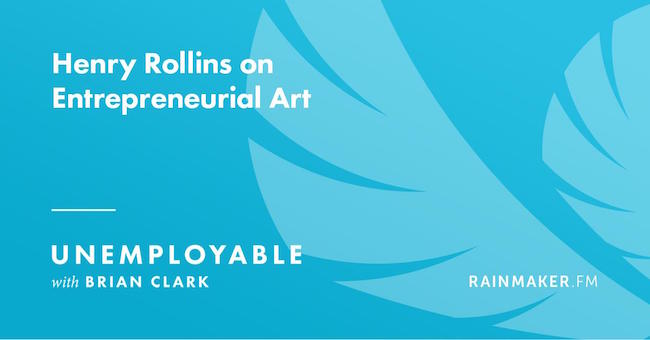Tuesday, May 31, 2016
From Apple to Zuckerberg: How Leaders Really Lead
Monday, May 30, 2016
Technical Debt: The Silent Company Killer
Regional Player Careem Wins Against Uber
Sunday, May 29, 2016
The Advantages Of Solar LED Lights
style="display:inline-block;width:250px;height:250px"
data-ad-client="ca-pub-7815236958543991"
data-ad-slot="8717335615">
Supplanting your energy source and picking vitality lessening lighting choices can have an immense effect to your expenses and even offer you solid lighting particularly for your open air needs. There are such a large number of lighting options and sunlight based LED lights are a portion of as well as can be expected pick. This is on the grounds that they are financially savvy, as well as don't require an excess of vitality to serve your necessities. Sun based LED lights use assets at an abnormal state, making them exceptionally useful when utilized as a part of various sources. You remain to appreciate various advantages when you select these lights for your utilization and they incorporate the accompanying.
1. Driven enlightenments are more viable
This is on account of the lights produce directional light bars superior to anything fluorescents. The lights likewise have low lumen yield appraisals making them perfect alternatives for open air light applications. Their aspect makes them very dependable notwithstanding amid dim sky days.
2. Sun powered LED lights have upgraded effectiveness
LEDs and sun powered cells share loads of attributes like they both require adjusting and sorting for execution to be upgraded. Sun powered LED lights need to adjust resistors since they are all around designed. They enhance light levels and current streams and this enormously enhances the general framework effectiveness.
3. They can be calibrated to address client issues
They are programmable and can be calibrated not at all like their ordinary lighting partners. They won't just convey the light where it is required, however will likewise convey at once and levels that are required. This has diminished the sun oriented board size furthermore the battery limit by a colossal rate. You can choose a lighting profile that works for your application. You can likewise have custom profiles introduced to coordinate your undertaking nature and size when utilizing sun based LED lights.
4. You will appreciate developed battery runtime
Most galaxies today have tended to battery drops that are normal with the frameworks. When you pick a sunlight based LED light that is deliberately organized, you will appreciate highlights tending to framework cost, siting issues and board size to ensure that your definite needs are fulfilled. At the point when the framework operation is guided by the precise needs, you have nearby, then you can make certain to appreciate expanded run time of the battery making them entirely dependable.
5. You show signs of improvement execution even in icy climate
Sun powered LED lights and sunlight based cells offer enhanced execution, effectiveness and even lifetime administration amid colder temperatures, making them profitable contrasted with other light sorts whose lifetime and execution drop amid colder atmospheres like DC fluorescent. A sun based LED light can last up to ten times longer as DC fluorescent in these frosty situations making it more dependable.
Sun powered LED lights come in various styles and outlines and in addition sizes, making it workable for you to pick the lights that are most suited for your open air needs. It begins by considering the lighting prerequisites you have in your space before then selecting the best lights.
Sun based LED lights are unquestionably worthwhile yet you should likewise guarantee that you get your lights from dependable sources to appreciate all the advantages.
Restaurant Customer Service And Technology: Chili's' Tableside (POS) And Mobile Approach
GAO: Treasury Still Using 56-Year-Old IT Systems
Saturday, May 28, 2016
Aziz Memon: Pakistan's Social Entrepreneurship King
Rainmaker Rewind: Henry Rollins on Entrepreneurial Art
We have a special treat for you on Rainmaker FM this week …
Music legend and entrepreneur Henry Rollins joins Brian Clark on Unemployable to discuss how his career (including his role as frontman of Black Flag) has thrived due to a DIY-producer ethic, why he formed his own publishing company, and how he became a self-made media personality.
There's a lot of other great content on the network these days, so be sure to check out the rest of the shows highlighted in this week's edition of Rainmaker Rewind.
- Unemployable. Henry Rollins joins Brian Clark for a second time to discuss music, entrepreneurship, and the art of self-promotion: Henry Rollins on Entrepreneurial Art
- Copyblogger FM. Sonia Simone dives into why focusing on email opt-ins is one of the most important content marketing practices: Content Marketing Best Practices: Getting Email Opt-Ins
- The Digital Entrepreneur. Brian Clark and Jerod Morris explain how you should be using social media to connect with your audience: Does Your Social Media Strategy Need a Mindset Shift?
- Hack the Entrepreneur. Jon Nastor chats with Paul Kortman about the transition from office life to entrepreneur life: The Reluctant Path to Becoming an Entrepreneur
- Elsewhere. Charlie Gilkey welcomes Sonia Simone to The Creative Giant Show to chat about marketing, careers, and digital business: Sonia Simone on The Creative Giant Show
- The Missing Link. Jabez Lebret and Steve Anderson discuss building authority and becoming an influencer on LinkedIn: An Influencer's Guide to Building Your Authority on LinkedIn
- Zero to Book. Jeff Goins and Pamela Wilson review the various means of publishing and identify which route is ideal for authors - especially first-timers: Artisanal Publishing and the Hidden Power of the Beginner's Mind
- The Showrunner. Jerod Morris and Jon Nastor explain how and why booking guests for your podcast is well-worth the sometimes overly complicated booking process: How to Execute Engaging Podcast Interviews
- Confessions of a Pink-haired Marketer. Sonia Simone talks web traffic, sales pages, and the one element you need to master if you want your content to work: The Context of a Successful Content Strategy: The Harpoon and the Net
- Youpreneur. Chris Ducker shares the top five reasons why originality is so important in business and gives away one of the keys to long-term business success: How Being 'Original' Can Boost Your Business Faster than Anything
And, one more thing …
If you want to get my Rainmaker Rewind picks of the week sent straight to your favorite podcast player, subscribe right here on Rainmaker FM.
See you next week.
The post Rainmaker Rewind: Henry Rollins on Entrepreneurial Art appeared first on Copyblogger.
A Little Secret Labor Advocates Won't Tell About "Living Minimum Wage"
Friday, May 27, 2016
A 'Silicon Valley' Reference Guide For Non Techies
This Week In Credit Card News: Thieves Steal $12 Million With Fake Cards; Free Credit Scores For All
The Price of Digital Commerce Academy Goes Up Today

The day I first told you about last week is now here.
It's Friday, May 27, 2016 … which means that the price you will pay for an annual investment in Digital Commerce Academy goes up today at 5:00 p.m. Pacific Time (6:00 p.m. Mountain Time, 7:00 p.m. Central Time, 8:00 p.m. Eastern Time).
The current price is $395 per year. That's still our early adopter introductory price.
Today at 5:00 p.m. Pacific Time, the price will go up to $595 per year.
The crazy thing about the price is that when we start selling the full courses that are inside of Academy on their own, we'll charge $495 per course. So the current annual price ($395) is less than the price of one course - and you get immediate access to all four courses.
Plus, you get access to all of the courses we add in the future, plus all of the weekly case studies and coaching Q&As, as well as the community. And it's a fact … current members tell us that these aspects of Academy are even more valuable than the courses!
To get started with Digital Commerce Academy right now, so you can lock in the low price (for the lifetime of your account, even when the price raises again, which it will), click the button below:
Build the Digital Business of Your Dreams
If you're interested in creating digital products, please don't hesitate. Your first step will never be this affordable again.
So take this step (before the price goes up), or keep hoping and wishing you'll someday have the digital business of your dreams, instead of doing what you probably already know you should be doing … which is actually building it.
We're here to help you with the how, which can sometimes be tricky without a proven plan and some ongoing guidance. We know. We've been there. 
I hope you'll take us up on this offer to help.
Click here to learn more about Digital Commerce Academy and join today.
Take action today. Lock in the low price. Then take your next step by digging into the course or case study that is most appropriate for you at this moment.
There's zero risk with our no-questions-asked 30-day refund policy. Try Academy out and see what you think:
http://digitalcommerce.com/academy/
I'm looking forward to interacting with you inside Digital Commerce Academy!
The post The Price of Digital Commerce Academy Goes Up Today appeared first on Copyblogger.
How To Create An Amazing Workplace Culture From Day One
Find Your Readers: 6 Marketing Channels (and which ones to pick)

Creating great content is pointless…
…unless you're getting it in front of your target audience.
You do this by using any one of a number of promotional tactics to reach your target audience on a variety of platforms.
Most of these platforms can be grouped together, and that's where we get marketing channels. A promotional tactic can then be applied to most of the platforms in the channel.
For example, social media is a marketing channel, consisting of platforms such as Facebook, Twitter, Instagram, etc.
Depending on whom you ask, you'll get different answers to the question of how many marketing channels there really are.
The number gets even more complicated if you consider that there are many offline marketing channels as well.
However, for most of us, the number of channels doesn't matter.
What does matter is that there is a handful of core channels that are by far the most effective digital marketing channels.
That's what this post is all about.
We'll go over the six main digital marketing channels you should at least be familiar with. On top of that, I'm going to show you how to evaluate each channel to determine whether it's worth your time.
The real power of studying channels: If you want to learn this stuff because you love marketing, that's great. But there's also a great practical reason for you to want to learn it.
Once you learn how to identify the best marketing channels for your business, you can study them and create content for those specific channels (and sites in them).
By targeting content towards a specific audience, you're much more likely to create something they'll love and want to read.
Channel #1: Search engines (SEO) is the best place to start
There are very few websites that wouldn't benefit from search engine traffic.
No matter what industry you're in, some of your target customers are using search engines to search for something.
That doesn't mean you should necessarily spend all your time on SEO. It's not always the best channel, but it's one that you must research.
What you should be looking to do at this point is just some basic keyword research. Afterwards, you can do some more advanced keyword research with these resources:
- 5 Modern Keyword Research Methods to Uncover Hidden Gems
- Keyword Research – The Advanced Guide to SEO
- How to Use the Google Keyword Planner Tool for SEO
Here, we just want to see the general number of searches your target audience does every month.
For that, the Google Keyword Planner will work just fine.
Start by entering some broad niche keywords. For example, “content marketing” or “social media marketing” if you were starting a blog like Quick Sprout.
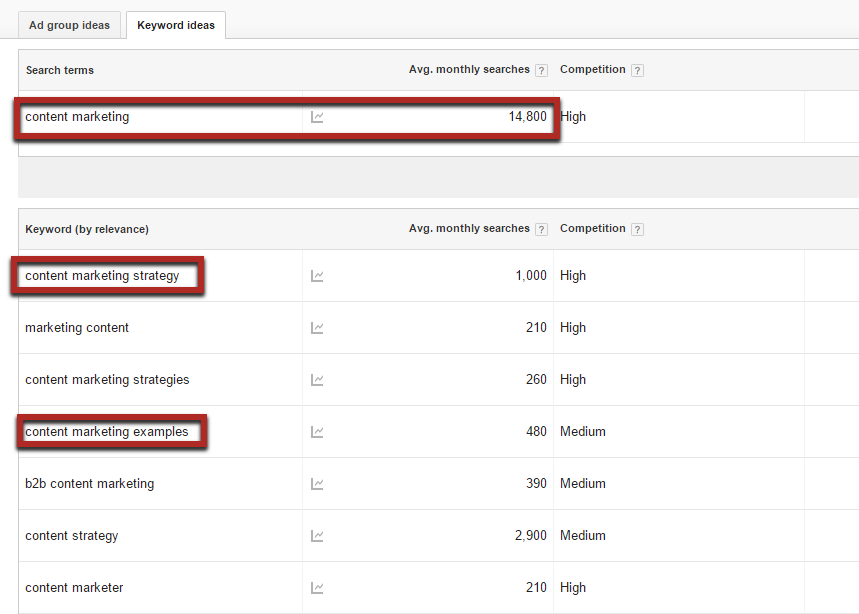
Look through the list that comes up, and see how many keywords have a significant search volume (at least a few hundred per month).
While you're missing out on a lot of keywords using this simplistic method, you want to see at least 50 keywords worth targeting.
If you don't know where to start when it comes to searching for keywords, find a close competitor in your niche.
Then, enter their URL in the website field of the keyword planner instead of typing in keywords.
If they have a WordPress blog, you can typically add “/feed” to the end of their blog URL to get a more complete set of keywords.
For example, instead of entering:
https://www.quicksprout.com/blog/
enter:
https://www.quicksprout.com/blog/feed
That will give you a set of really broad keywords, and you can enter any of those into the tool to get a list to analyze.
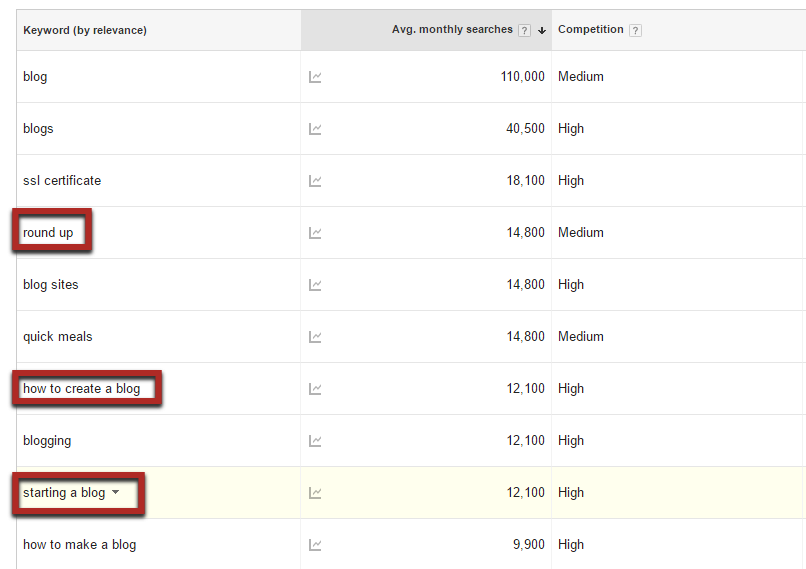
Channel #2: If you want readers fast, PPC (pay-per-click advertising) is the way
When you identify a marketing channel, you first want to make sure you can actually reach your readers through it.
After, you need to decide if it's ideal for your business. All channels have their strengths and weaknesses.
SEO, for example, can provide you with steady, high-quality free traffic. The downside is that it is hard to earn that traffic, can take a long time to get, and requires an upfront investment.
PPC, on the other hand, allows you to drive the same type of traffic (if you're using AdWords) from day one of publishing content. There are also many more platforms you can use other than search such as Facebook advertising, LinkedIn advertising, or even a small network like 7search.
The downside is that it's expensive, and if you don't have a solid conversion funnel in place, you'll end up wasting that traffic and losing money.
When can you use paid advertising? Another benefit of PPC is that you can use it for virtually any niche.
If there's search traffic, you can advertise on Google or Bing.
If it's most popular on social media, you can advertise there.
If you have a significant content promotion budget (on an ongoing basis), PPC is an option at your disposal.
However, if you don't already have a solid sales funnel, be prepared to lose money.

Your time should mostly be spent optimizing ads and conversion rates of your content (readers into email subscribers). From there, you'll need to determine the best way to sell to those subscribers.
Channel #3: You don't always have to compete with other blogs
If you're starting a blog, I sure hope there are at least a few other, remotely similar to yours, popular blogs that already exist.
If not, there probably aren't many potential customers reading blogs in that niche, and you're wasting your time. The one exception is if you're writing about a very new topic that has just started growing.
These blogs are usually seen as competition, but they don't have to be.
A reader is not an all-or-nothing asset. A reader can follow multiple blogs.
If you give blog owners an incentive, you may be able to get them to allow you to get your message in front of their readers.
How?
The main ways are:
- Guest-posting – I guest-post on a regular basis and have written multiple guides to using it effectively. Here, the incentive is free content for the site owner. Of course, you need to make sure that your content is good enough to be worth it. Not all blogs allow guest posts, but many do.
- Joint content – For all my advanced guides (in the sidebar), I've gotten help from respected bloggers in each niche. They get publicity, and I get help with my content.
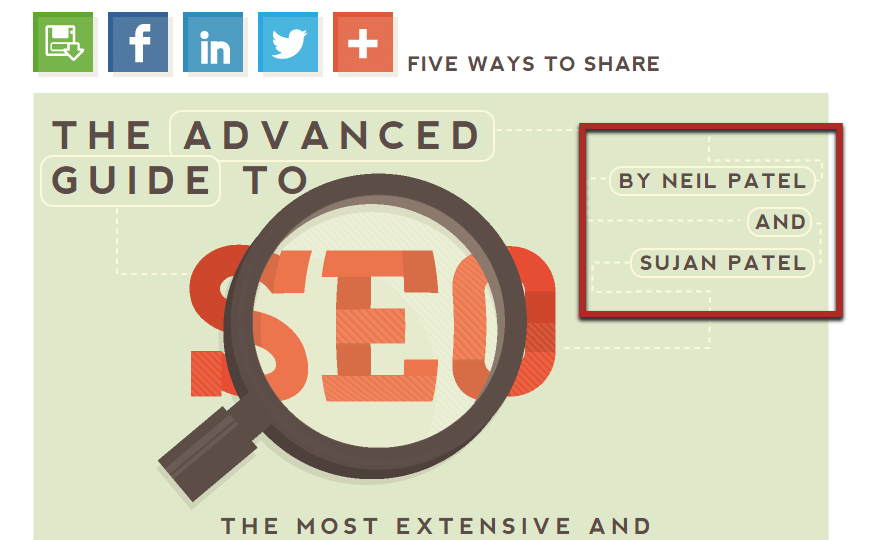
- Sponsored posts – You can contact a blogger and offer to sponsor a post. These typically involve a few mentions naturally throughout a post.
- Joint ventures – You can even get involved with a product a blogger sells and help improve it. Their customers will see you in a very good light, and many will follow you because of it.
For now, you want to find as many of those blogs as you can.
It's pretty easy these days. Start by Googling a phrase like “top (niche) blogs.”
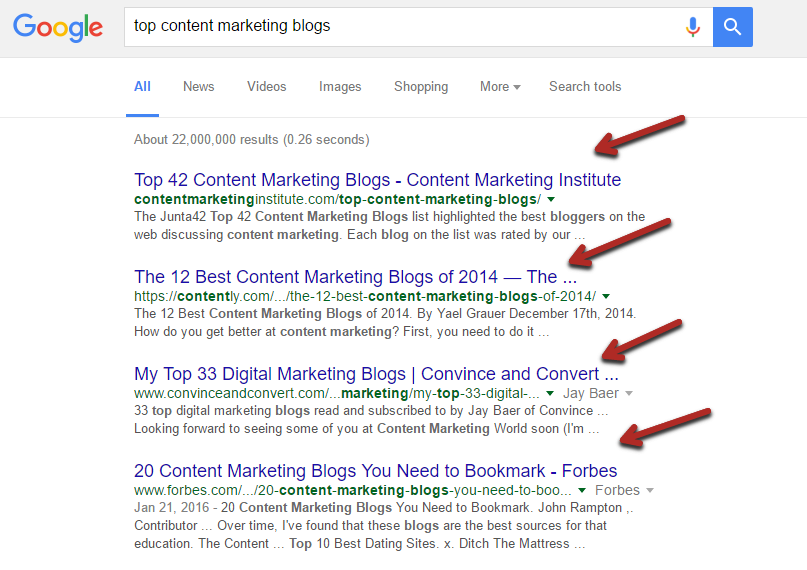
You'll probably find at least a few results, featuring long lists of blogs in your niche.
Write these down somewhere.
You can also head to Alltop, find your niche in the menu bar, and then write down the blogs that come up:
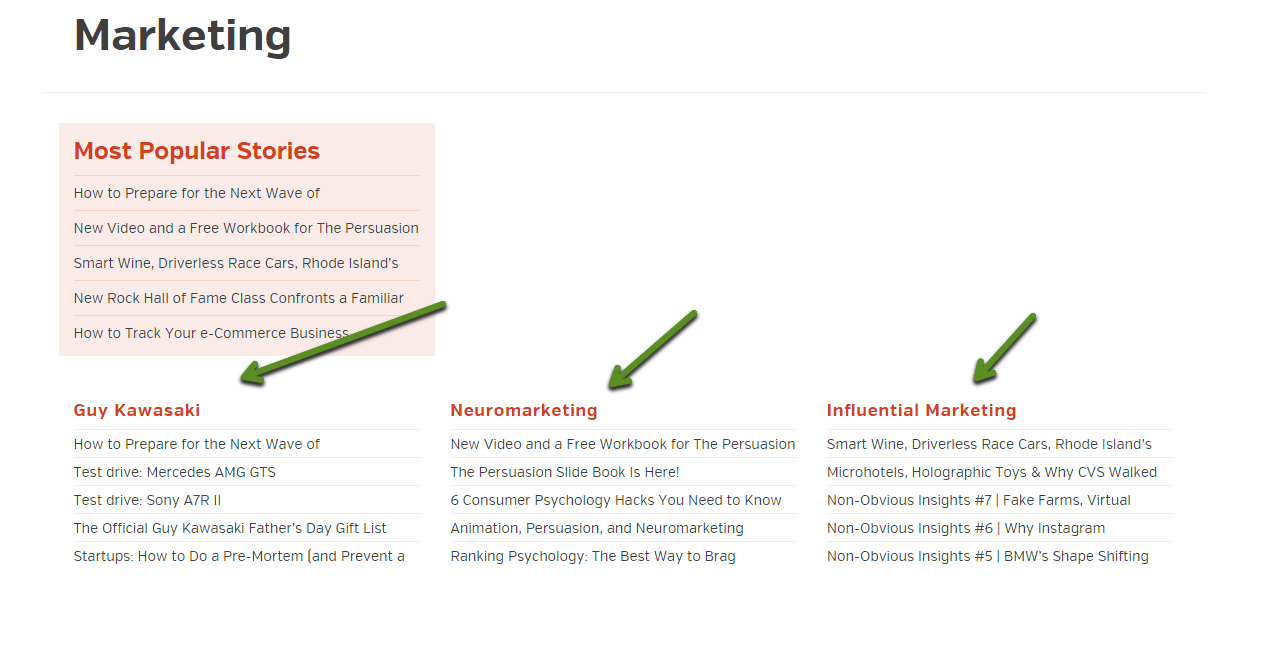
Traffic is king: There's no point in doing a guest post on a site with very little traffic. Even if your post is great, you'll only get a few readers from it.
Your next step is to estimate the traffic levels of each site you wrote down.
Visit each site, and look for:
- Average number of comments on each post
- Average number of social shares
- How well designed the site is
- Whether the number of subscribers is listed anywhere
It's hard to know if a site has a lot of traffic, but if it's getting 5+ comments or 100+ social shares on each post, it has enough to consider partnering with.
Filter out all the low traffic sites. If you still have 20+ sites left to potentially work with, then these blogs are another channel you can target.
Channel #4: Can you be social?
Social media sites are usually hit or miss.
Some niches, like fitness, food, fashion, and even marketing to a degree, are highly shareable.
In order to use social media effectively, you need those extra followers and readers you get from “likes” and “shares.”
That's why you don't see a lot of asphalt companies or paper companies killing it on social media. It's really hard to create shareable content in those niches.
To see whether it's viable for your niche, you can use Buzzsumo, a tool I've mentioned many times before. Not only will it show you if your niche is popular on social media, but it will also tell you which social media sites to focus on.
Type your niche into the top content tool. If the results seem irrelevant, add quotation marks around your keyword:

In addition to the core keywords, I recommend typing in a few related keywords for more data.
You're looking for two things here:
- Is content in my niche shareable? – If there are several pieces of content with over 1,000 shares, it's safe to say that your niche is viable on social media.
- Which network(s) is most popular? – You'll likely see that one or two networks make up 90% of the shares. In the case above, Twitter is the dominant source, followed way behind by Facebook and LinkedIn in most cases.
While there may be a few fluctuations, you'll see that there is a pattern when it comes to the most popular social networks. You'll want to focus on the most popular ones if you choose to use social media.
Channel #5: Forums are the backbone of the Internet
Forums have been around since the start of the Internet and continue to play a big part in most users' online lives.
While getting readers from forums doesn't scale very well, it can be very effective when your blog is new and you need that initial audience to write for.
On top of that, it's free-other than your time investment.
Here, you need to find out whether there are any popular forums. To do so, Google for “(niche) + forum.”
You need a minimum of one highly active forum. You want to see 100+ users a day making new posts.
Check out the first few results, and see if any meet that criterion.

You can usually scroll to the bottom of a forum to see how big it is.
Turns out, there actually aren't any good content marketing forums – bummer.
If you run into a case like this, you do have the option of expanding your scope (“marketing forums”), but it's usually better just to move on.
Channel #6: Q&A sites
Some might group question and answer (Q&A) sites with social media sites, but I think they're distinctive enough to warrant their own section.
The biggest Q&A sites are Quora and Yahoo Answers.
Just like forums, these don't scale well, but they can drive a good amount of traffic to your blog (if you include links in answers).
One bonus is that your answers will rank well in Google for long tail search terms (which are usually questions), which will send you consistent traffic in the future as well.
Head to Quora, and start typing your niche into the search bar. You're looking for a topic that is exactly the same as yours or close to it (click it):

Quora provides follower statistics on each topic page on the right. If a topic has a good number of followers (say 20,000+), it's active enough that you could focus on it as a marketing channel:

As a side note, here's my post on using Quora for marketing.
Conclusion
Now that you have a good grasp of the ways to determine whether you could use a channel for marketing, it's decision time.
Take a look at each channel, and first decide if your audience uses it (as I've shown you).
Then, consider the relative popularity of each channel, your budget, and your goals, and determine the top 1-3 channels.
You don't want to try to target too many channels at once. Instead, focus on one or two, and put all your resources into using them effectively.
If you need help doing this, I'm happy to try to point you in the right direction. Leave me a comment below with as much detail as possible, and I'll try to help out.
How to Calm Your Content Anxiety in 5 Simple Steps

It was an early morning of coffee, loud music, and blasting the internet with everything I could muster.
I had already published a few articles on my website, skipping the draft process. Then I scrambled to share them on every social media network and group chat that I could think of.
Twitter, Facebook, Google+, LinkedIn, Slack channels, Facebook groups, email newsletter(s) - you know the drill.
It was a copy/paste nightmare, but that's what the “experts” had told me to do. The familiar phrases of “Content is king!” and “Blog every day!” were among the many maxims running through my mind that morning.
We are often told that your frequent presence online is vitally important. More interaction, more connection, more conversion.
This is partially true, but experience has taught me that excessive presence damages both your authority and your own personal fulfillment.
More content is not always better content
I was on a content-production rampage during this particular reinvention (yes, I've done this “online thing” quite a few times, and from scratch). Yet, I was just as internally frustrated as when I wasn't producing any content at all.
The problem - obvious now in hindsight - is that more does not always mean better.
It's the most basic of truths, known by everyone you've ever met, yet contrary to the mainstream teachings of many online “gurus.”
Instead of wasting your time with fruitless effort, here are five steps that will help calm your content anxiety and safeguard you against our shared tendency to believe frequency trumps quality.
Step #1: Adopt the “One-day-queue” rule
Slowing down might sound easy, but it's far from it.
If you're like me, your typical routine is to go from inspiration to creation to production in the same morning (thanks to that gallon of coffee).
That habit makes sense when you're passionate about your project. Unfortunately, it may stunt your capacity to produce meaningful work for your audience.
Instead, live by what I call the “one-day-queue” rule:
When you are inspired, resist the urge to create and publish on the same day.
This includes blog posts too - don't rush to publish an idea that you haven't fully developed.
Hold back to ensure you're publishing the most relevant, useful content.
Step #2: Work with an editor
If you write any type of content, working with an editor should be a priority.
Your editor can shield you from your own impulsiveness and prevent you from publishing a post on your blog or sending your email newsletter in a fury.
When you get in the habit of having someone else review your content before you publish, you're forced to slow down your process.
Editors also don't have to be expensive. If you ask a friend, coworker, or family member, he or she might even review your work for free to support you.
An “editor” who has an eye for polished content will help you craft your best work - and any cost will be money well-spent.
Step #3: Schedule social media updates
This is quite difficult for me because I impulsively tweet a lot, but scheduling your social media updates helps you practice something I like to call “funneling your impulse.”
What do I mean by that?
Let's say you're scanning - you guessed it - your Twitter timeline, and you get an idea for a tweet.
Instead of satisfying the urge to post that tweet immediately, funnel your impulse through a filter by scheduling it for at least 10 minutes in the future.
In that time, you might rethink posting that tweet and therefore have time to delete or rephrase it.
That's an option you wouldn't have had if you just impulsively posted the tweet.
Step #4: Learn the art of observation
Simply observing may be difficult for some creatives, but it's undeniably required.
Discovering and examining your audience's needs will help you serve them better.
Spend more time watching and less time building.
Don't build for the sake of production; build for the sake of creating a solution.
Solve your audience's problems, and you won't have to shout so loud.
Step #5: Focus on the entire process, not just the product
I once mentioned in a newsletter email on mobile-first design that web designers should focus more on the process than the product.
It's understandable that we have a natural tendency to be preoccupied with that glorious finished product - part of the process, even.
But our motivator can often become a distraction and we neglect other important steps.
Aim to balance the time you spend on your marketing efforts and creating your products.
Better content, at a manageable pace
Following these guidelines has allowed me to craft high-quality content at a more regular pace, and with less effort.
I don't write a blog post and publish it the same day, or blast out an email prematurely, just to find several typos in each of them the next day.
Instead, I feel confident knowing that the content I do publish (or cancel) has been carefully reviewed.
In turn, those who follow me receive better content, read articulated and refined writing, and experience an overall stronger presentation.
The post How to Calm Your Content Anxiety in 5 Simple Steps appeared first on Copyblogger.
Revulsion To Used Goods Tests Asia's Uber-style Sharing Economy
Landing Pages Defined in 60 Seconds [Animated Video]

You've probably heard us talk about landing pages a lot around here.
There is a good reason for that.
When executed correctly, a landing page is a powerful tool that helps you gain new subscribers, sell your products, and more.
But what exactly is a landing page?
Watch our short, fun video about landing pages
With help from our friends at The Draw Shop, we whipped up 12 definitions from our new Content Marketing Glossary into short, fun whiteboard animated videos.
Here's our video for the definition of a landing page:
Animation by The Draw Shop
And for those of you who would prefer to read, here's the transcript:
A landing page is any page on a website where traffic is sent specifically to prompt a certain action or result. Think of a golf course … a landing page is the putting green that you drive the ball, or prospect, to.
Once on the green, the goal is to put the little white ball in the hole in the grass. Likewise, the goal of the copy and design of a landing page is to get the prospect to take your desired action.
The goal could be to sell a product. It could be to get email newsletter sign-ups. It could be to download an ebook. Watch a video. Sign a petition.
The variety of landing page goals is endless, but the important thing to remember is to have one goal per landing page.
One page, one goal. Nothing more.
Share this video
Click here to check out this definition on YouTube and share it with your audience. You'll also find 11 additional Content Marketing Glossary videos.
Learn more from the Content Marketing Glossary
We'll feature the rest of the videos soon, but if you'd prefer not to wait, you can watch all the videos now by going directly to the Content Marketing Glossary.
If you would like to learn more about landing pages, visit these three resources:
- Landing Pages: Turn Traffic into Money
- The Savvy Marketer's Checklist for Seductive Landing Pages
- 3 Surprising Stages of Successful Landing Pages
By the way, let us know if you have any definitions you'd like us to add to the glossary! Just drop your responses in the comments below.
The post Landing Pages Defined in 60 Seconds [Animated Video] appeared first on Copyblogger.
Thursday, May 26, 2016
One Skill that Will Take Your Writing from Good to Great

Halfway through the writing course, our instructor - not known for being one to sugar-coat - threw out a challenge:
“Send me a favorite piece of your writing and I'll critique it; I'll tell you whether or not it's any good. The only catch is, I'll be critiquing it in front of the entire class.”
A surprising number of us (bristling with hope and hubris I suppose) took up the offer. The ensuing session was, to date, the most illuminating experience I've had as a writer.
The key message we all took away?
Not that we needed to self-edit more tightly or have better ideas. It was this:
If we wanted to be truly great writers, we had to first write many, many words. And then we had to be willing to walk away from the majority of them.
Back to the session …
Find the single, golden line
The first thing our instructor did was throw most of our work straight on the scrap heap:
“Completely vanilla. If you have nothing new to bring to this topic, don't add to the noise out there in the world about it.”
Next came her response to a 1,000-word piece of text. From it, she identified a single, golden line - the seed of a big idea:
“Start again with just that line. Throw away the rest.”
A rambling 900-word tribute to someone dearly departed? Ruthlessly whittled down to 250 emotion-laden words that cut the reader to the core.
At the end of the session, our instructor told us not to feel dismayed. She applied the same ruthlessness to her own work; three out of four blog posts she wrote never saw the light of day.
This was revolutionary to me. Previously, I assumed that if I'd spent any amount of time writing and editing it, then the content was worth publishing.
After? I discovered the truth in her lesson and found that throwing away words made the difference between simply creating content and creating content that resonated deeply with the world.
I also found that while my “throwing-away-words muscle” was pretty weak initially, the more I used it, the stronger it got.
So, how do you exercise that muscle? These three activities helped me.
1. Make time each day to free write
As someone with limited time on her hands, I always felt pressure to make the most of my precious writing hours.
While I was making time to write every single day via a daily Morning Pages habit, I'd spend that time writing first drafts. (Not really in the spirit of Morning Pages!)
I decided to stop with the “first drafting” and instead use Morning Pages the way they were intended - as an exercise for writing 750 stream-of-consciousness words.
It was astonishing to see the incredible thoughts and ideas that emerged from that pressure-free environment; they were ideas I'd never have accessed without the time, space, and permission to write hundreds of words I might never use elsewhere.
2. Write first drafts longhand
I always used to type first drafts on my computer … and I also would edit along the way.
This is bad form: Editing as you write is not terribly efficient, but worse than that, I was extra reluctant to let those words go - even if I knew they weren't working - because it had taken so much effort to produce them in the first place.
So, I tried writing my first drafts longhand, and one of three things started to happen:
- I was more willing to let an idea go if I realized I couldn't effectively communicate it.
- I'd start writing about one idea and then another, much better idea would emerge.
- I'd write my first draft at night and my subconscious would ponder it while I slept. The next day, my second draft was always infinitely better than if I had typed the first draft.
3. Give yourself time to do complete rewrites
I remember reading a post by Leo Babauta about the iterative approach he took to writing Zen Habits: Mastering the Art of Change.
He initially wrote what he called a “minimum viable book,” put it out in beta to a select group of readers, and gathered their feedback. Then, after a considerable amount of editing based on their feedback, he started again from scratch.
He started again from scratch?
That sounded like a nightmare.
But then I started giving myself more lead-time when I wrote articles.
Having considerable breathing space between each draft helped me see when I needed to start again in order to communicate an idea more clearly.
The key was, I now had time to do a complete rewrite instead of trying to edit the existing piece into something workable.
The path to great words
Many writers I know don't complete their final drafts until the last moment, fooling themselves into thinking they work better under pressure. I used to think that too.
And, certainly, I've always been able to produce work that is “good enough” while under pressure.
But I want certain content I write (like this article for Copyblogger) to be better than “good enough.” I want my writing to change how people think and move them to take action that makes their lives better or easier - or makes the world a better place.
For those pieces of writing, I make sure I set aside enough time to write thousands of words to start.
Because I know that's the surest path to the words I really want. The ones that are great.
The post One Skill that Will Take Your Writing from Good to Great appeared first on Copyblogger.
Find Your Sweet Spot To Excel As An Entrepreneur
Monday, May 23, 2016
When Penalties Are Punitve They Are Not Tax Deductible
How To Make A Great Marketing Video For Your Company In Minutes
6 Unconventional Tips to Create Content Faster
How much content have you written in the past month?
Are you happy with that amount?
Most marketers answer no to that question. In fact, 44% of marketers say that producing consistent content is one of their biggest challenges:
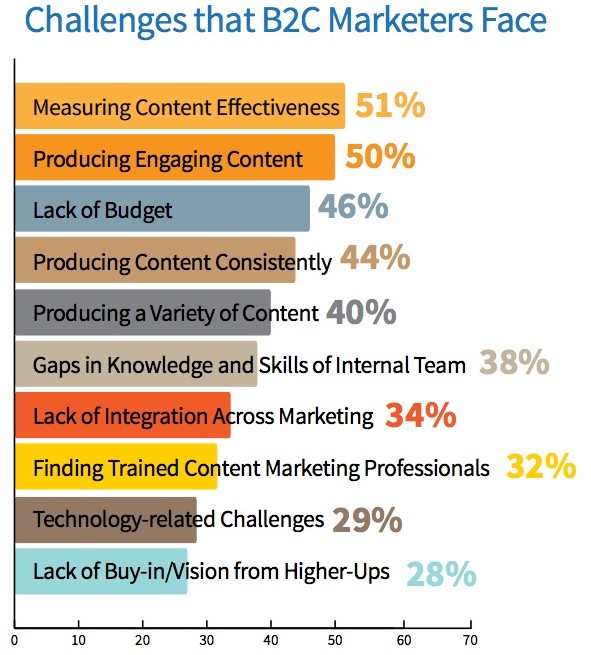
Believe me, I get it. Creating a high amount of high quality content on a regular basis is hard.
But the traffic, subscribers, and eventual sales you get from it make creating content a necessity for most businesses.
There are a few ways to make it easier to produce whatever level of content you're trying to:
- Raise your budget (hire writers)
- Devote more time to it
- Write faster
The first two are often out of your control or not possible at this time. The third one, however, is almost always possible.
If you haven't tried to optimize your writing habits, consider doing it now. It's possible to double your productivity after some tweaks. Imagine being able to produce an article in half the time it currently takes you?
Hopefully, by the end of this post, you'll have picked up a few tips that you can apply right away to significantly decrease the amount of time you spend creating content.
I'm going to share with you six tips, many of which are a bit unconventional but can work wonders.
1. Narrate, then write
Everyone is different, but most people can talk significantly faster than they can type. I'm talking 3-4 times as fast.
On top of that speed difference, consider how often you pause in the middle of writing because you lost your train of thought.
Then you have to take 10 seconds to figure out where you were headed and repeat that process every so often.
With speaking, there are no delays other than the speed of your thought.
What I'm advocating here is to speak general thoughts about your topic. If you can go through it in a general order, that's even better.
Record the audio on any free recorder app on your phone, or use an online app.
Then, when you've said all of your thoughts on your topic, type up your recordings.
They don't have to make perfect sense yet. Just write them down, and organize them into appropriate sections.
Once you're done, you can do a thorough edit and fill in any gaps that are left.
I suggest trying this out a few times, and if you like it, keep using it.
An added bonus – writing becomes much “easier”: When you simply write your content, you're always thinking about the length, overall quality, vocabulary, and so on.
On top of that, you're thinking about what to write next.
It's exhausting.
When you narrate beforehand, you can solely focus on ideas and concepts. Then, you can focus on everything else as you're editing. It makes writing much less intense and more enjoyable.
You can make this faster with tools: If you adopt this process, it should bring down your writing time by a bit and make it more fun.
However, if you're really looking to minimize your writing time, a few tools can greatly speed up your writing time further.
First, consider hiring a virtual assistant (transcriptionist) to type up your narrations. Once you train them, it will save you a considerable amount of time for a small cost.
Next, you could also use more advanced narration tools to record your thoughts directly in a Word document.
Recently, Google Docs added a new feature for voice typing. Go to “Tools > Voice typing…” to enable it.
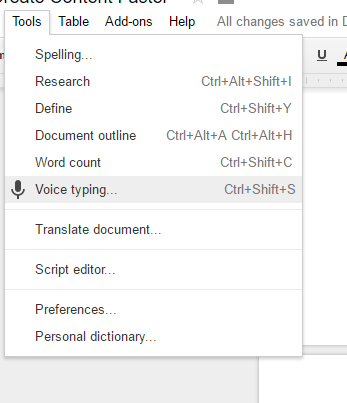
Next, click on the microphone icon that pops up. Once you do, it should turn orange to indicate that it's listening.
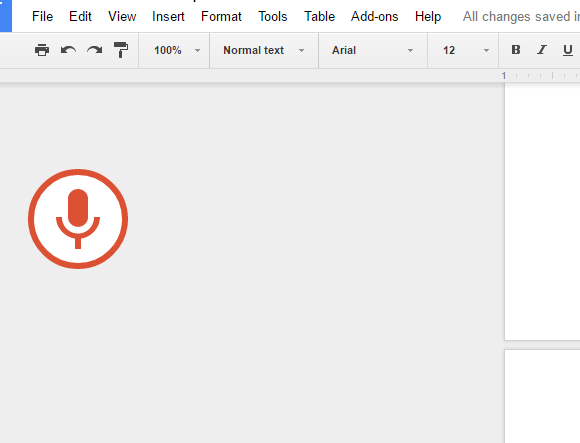
From there, you can just speak, and the tool does a pretty amazing job at capturing your words. It's not perfect, of course, but the technology has come a long way.
Don't worry about correcting mistakes-you can do that later.
There are a few voice commands you'll need; here's a list of them.
2. Limit your time
According to Parkinson's law,
Work expands so as to fill the time available for its completion.
Even if you haven't heard of it, I bet you've noticed it before.
When you have a week to write a post, it usually takes a week. You take extra time doing each part, not hurrying to finish early.
When you need to have a post finished tomorrow, you get right on it in the morning and focus like a laser. You have no choice but to work as hard as you can.
Now that you understand the law, you should apply it to your writing process.
Most marketers like to give plenty of extra time in case they can't finish a post in time.
What I advise you to do, and what I do myself, is to limit your time to the lowest amount you think is realistic (without rushing the post).
For example, if I think a post can be done in a day, that's how long I allot for it.
The other side of this is that it's a good idea to plan in advance and have a few extra posts ready to go.
If you do underestimate the time a post will take, which does happen, you want to have those backups ready to go.
3. Start at the end, and work backwards
Writer's block affects everyone, even us non-fiction content marketers.
You stare at a blank or mostly blank page, trying to think of something to write.
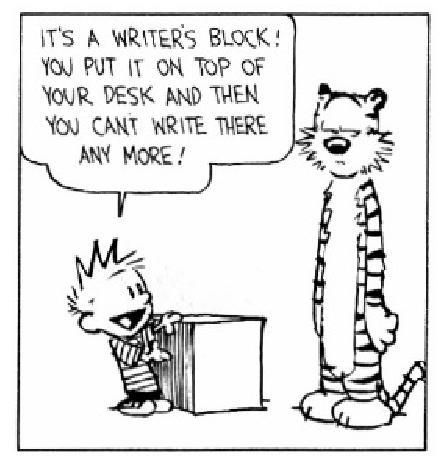
This is clearly a huge waste of time.
Consider that the average typing speed is about 40 words per minute. You might even be able to beat that.
If you could simply type for an hour straight, at 80% of that speed, you'd crank out 1,920 words per hour.
Be honest, do you even come close to that when you're actually creating content?
If you do, you probably don't need this post.
This dead time is the main reason for this drastic difference in theory versus reality.
The main cause of writer's block: There are many reasons that could cause you to pause while writing, but the most common is trying to think ahead.
You try to consider what you should write next and whether that will make sense when you'll get to the later parts of your post.
Sometimes, you just stare at a blank screen because there are too many possibilities, which overwhelms you.
You can eliminate this by taking the opposite approach.
Instead of wondering what you should write at the moment, you should ask yourself, “What is the point of this post?”
Once you know that, work backwards, and create a very basic outline that supports your central points.
This takes 5-10 minutes upfront but can save you a ton of time, especially with long posts.
4. Make typing automatic
I told you above that the average typing speed is 40 words per minute.
Honestly, it's not too difficult to push that to above 60 words per minute. Doing that alone will decrease your writing time by up to 50% (probably more like 20% due to other distractions).
That's a huge amount.
If you're already a really good typist, just move on to the next section. But I know that a lot of my readers know multiple languages, and some might not have grown up with computers, which makes it difficult.
Remember, typing is a skill. Like all skills, it can be improved with a bit of practice.
And if you currently have to think about where keys are on the keyboard, taking the time to make typing an unconscious habit will pay off greatly.
Step 1 is to test your typing speed. There are many free tests out there, and Key Hero is one of them. The test will only take a minute or two.

If your typing speed is under 60 words per minute, you'll benefit a lot from improving it. Alternatively, use the narration tools I mentioned in tip #1.
How do you actually improve your typing speed? To start with, you need to make sure your typing technique is correct.
The proper hand placement consists of your 4 fingers on each hand hovering over the home row (middle) keys and thumbs over the space bar.

Next, get in the habit of not looking at the keyboard. If you do, it'll be next to impossible to get to a solid typing speed.
Once that feels normal, if you haven't been doing it already, it's time to practice. Key Hero has a practice round that should work really well-you just type random letters and words that come up:

Commit to just 20 minutes a day, and in a few weeks, you'll see big improvements.
Do a little work now to save hundreds of hours in the future.
5. Take breaks (yes, seriously!)
It's extremely counter-intuitive, but taking breaks usually makes us more productive.
Studies have shown that even short breaks of a few minutes can improve productivity by over 10%.

It makes sense when you think about it. After working for a while, you lose focus, get bored, and can't concentrate well.
Breaks don't need to be long, but a few minutes every 30-60 minutes is a good idea. You should know how much time it takes before your concentration starts to wane.
If you're not sure where to start, I highly recommend the Pomodoro Technique.
It's very simple:
- Set a timer for 25 minutes
- Work until the timer finishes
- Take a 5 minute break
- All of that is one Pomodoro
- Repeat steps 1-3 four times. After the fourth 30-minute period, take a long break (anywhere from 15-50 minutes, up to you)
Here's an online tomato timer, or you can use a timer on your phone.
This procedure is supposed to keep you focused and fresh while working.
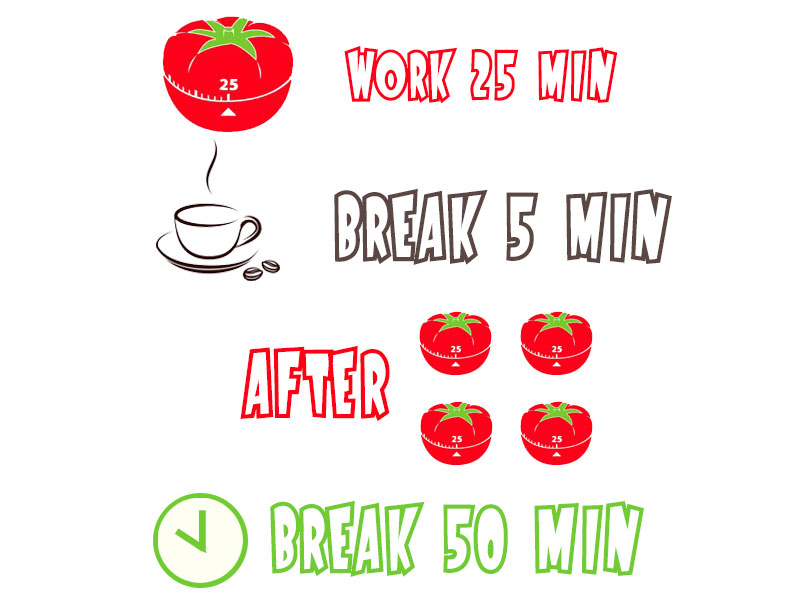
6. Write first, edit after
I kind of touched upon it earlier, but I want to make it clear here.
There are all sorts of distractions while you write. Random thoughts you have, trying to decide whether you're using the right words, figuring out what to write next, and so on.
Whether it's obvious or not, you're multitasking.
Multitasking is horribly inefficient because every time you switch to thinking about the next thing, there's a “switch cost.”
The switch cost is often just a second or less, but consider that you can have thousands of thoughts an hour, and it adds up to minutes of wasted time on a regular basis.
Research has shown that constantly shifting focus can decrease productivity by up to 40%.
This is the main reason you don't want to write a sentence and then think about whether you should edit it. It takes way too much time, and then you waste more time switching back to your writing mode.
The first draft of anything is garbage.
That's a quote by Ernest Hemingway, one of the most famous writers there is.
Even if you're editing your content line by line, it's still going to suck compared to what it has the potential to be. You can't really know whether a sentence fits until you have the whole post written.
As you can see, this type of multitasking doesn't work, and you should edit your post after you've written everything you wanted to say.
So, instead of multitasking, write the first thing that comes into your head.
That's what most professional writers do.
They don't revise until they finish the first draft-they just let the thoughts flow from their head onto the page. That's something that can also be accomplished through narration.
Then, you do a thorough edit and refine your content into gold.
It may seem like doing two things instead of one will take more time, but try it, and you'll likely find that you will not only have a better final product but also save time.
Conclusion
Content is a necessary part of modern marketing for most businesses.
And yet, it's always difficult to find the time to produce content on a regular basis.
That's where learning how to create content faster comes in.
I've shown you six different ways to create content faster. Just try one or two for now, and come back for the rest later. Measure your content creation times before and after, and you should see a big difference.
If you have any other unconventional tips that you'd like to share, I'd be really interested to hear them. Just leave me a comment below.
Sunday, May 22, 2016
Founders of Sakara Life Talk 'Making Your Mess Your Mission'
LLC Distributions Arising From The Debtor's Labors Subject To 25% Earnings Exemption In Alexander
Saturday, May 21, 2016
How I (Finally) Hired A Rock Star Summer Intern For My Small Business
Rainmaker Rewind: How Advice Columnist and Author Heather Havrilesky Writes, Part One
We always have great guests on Rainmaker FM, and this week is no exception …
This week's Rainmaker Rewind features an interview on The Writer Files with advice columnist and author Heather Havrilesky who chats about her writing process as well as the many hats she's worn over the last 20 years.
Plus, I've included my favorite Copyblogger post from the last week and eight more must-read articles for you.
- This week on Rainmaker FM, Kelton Reid interviews advice columnist and author Heather Havrilesky on The Writer Files: How Advice Columnist and Author Heather Havrilesky Writes, Part One
- This week on Copyblogger, Pamela Wilson explores how business owners can keep up with the demands of content marketing: The Content Marketing Continuum: How to Create Content to Meet Customers' Needs
- Paul Jarvis explains why you should try giving notice every single day: I'm giving notice
- Managing creative teams effectively may require additional skills. Here are six from Fast Company that you might need: 6 Habits Of Creative Managers
- Set yourself up to win with seven practical work-from-home tips from Business 2 Community: Get On the Productivity Train: How to Successfully Work from Home
- Listening to music may make the daily commute tolerable, but streaming a podcast through your headphones can make it disappear. The New York Times explains what's happening: This Is Your Brain on Podcasts
- Success in life and work is often a matter of attitude and beliefs, and YFS Magazine explains why that applies to entrepreneurs: Dear Wantrepreneur: These 4 Toxic Thoughts Are Killing Your Success
- Intelligent people's good habits are often highlighted, but this visual from Tech.Co explores the good and the bad: The Bad and Good Habits of Smart People [Infographic]
- From infographics and SlideShares to articles and memes, marketers and bloggers can never have too much help coming up with ideas for compelling, relevant content. ProBlogger explains how to decide which type to use for your business: The Best Research Tools for Finding Kick-Ass Content
- Marketing Profs looks at what neuromarketing can teach us about consumers: What Neuroscience Can Teach Us About Marketing
And, one more thing …
If you want to get my Rainmaker Rewind picks of the week sent straight to your favorite podcast player, subscribe right here on Rainmaker FM.
See you next week.
The post Rainmaker Rewind: How Advice Columnist and Author Heather Havrilesky Writes, Part One appeared first on Copyblogger.
Ten Of The Best Businesses To Come Out Of Shark Tank
Friday, May 20, 2016
Philippine Girls' Dating Service Wins Half Million In Capital Despite Near Collapse
Cut the Crap and Write Better Now

“Composition is a discipline; it forces us to think.
If you want to 'get in touch with your feelings,' fine - talk to yourself; we all do.
But, if you want to communicate with another thinking human being, get in touch with your thoughts.
Put them in order; give them a purpose; use them to persuade, to instruct, to discover, to seduce.
The secret way to do this is to write it down and then cut out the confusing parts.”
That's one of the best quotes about the craft of writing that I've ever read, particularly that deceptively simple final line. But then, it's always the simple stuff that trips us up when we think we've got it covered.
Why is cutting out the crap in our writing so difficult?
More importantly, how do we do it? Let's take a look …
Writing is a mind meld
You already know you should be writing to just one person, right?
If you're, say, the Pope, feel free to pontificate (the verb was named for you, after all) and address the masses with all the eloquent turns of phrase you can manage.
Assuming you're not a major religious figure, just write to me, your one, single reader.
Even if you have a massive audience, one person at a time reads your work.
It's nice to think that crowds are huddled around a computer screen raising a toast to your just-published post, but that doesn't happen.
In order to communicate with this single reader, you've got to organize your thoughts before you send them on the journey from your mind to your reader's mind.
The act of writing forces you to do this.
Determining your message, ordering its presentation, and refining it until it's crystal-clear all help to facilitate the trip.
Aim your pen
Aim your writing pen at the goal you're trying to accomplish with your content. Your objective will determine the path it takes.
Do you plan to persuade or instruct?
Why not do both? Even learners need to be convinced your instruction is worth spending time to consume.
Do you want to discover something new?
The research needed to produce effective writing is a great way to expand your own knowledge. That's why the Latin proverb says, “By teaching you will understand.”
Do you want to seduce and convince?
Use time-tested techniques to persuade with the one-two punch of logic and emotion.
Establish your authority, provide proof in the form of testimonials, and weave it all into a compelling story line.
Think you're done? Now … cut the crap
You have it. I have it. We all have it. Crap happens.
Every piece of writing starts out suffering from excessive verbiage, woolly thinking, and confusing tangents.
And that's okay. Write everything down, crap and all. Then cut out the confusing parts. Sounds easy, doesn't it?
Edit your writing by removing unclear, ambiguous, or overly complex phrases.
Remember, using more words doesn't make your writing better.
 You'll hold your reader's interest if every word justifies its existence in your post by adding meaning and moving your reader closer to your point.
You'll hold your reader's interest if every word justifies its existence in your post by adding meaning and moving your reader closer to your point.
William Safire calls this “the secret way” to lend order to your writing so your message reaches your reader intact. But it's not a secret anymore, is it?
Want to keep these concepts in mind as you write?
You can download and print our poster of the William Safire quote above (86 KB). It's perfect for taping next to your computer screen.
Become a better writer inside Authority
Authority is our content marketing training and networking community designed to help you build the skills you need to profit online.
Put your name on the Authority interest list by clicking on the button below. We'll let you know when we open our doors.
Editor's note: The original version of this post was published on March 30, 2011.
The post Cut the Crap and Write Better Now appeared first on Copyblogger.

